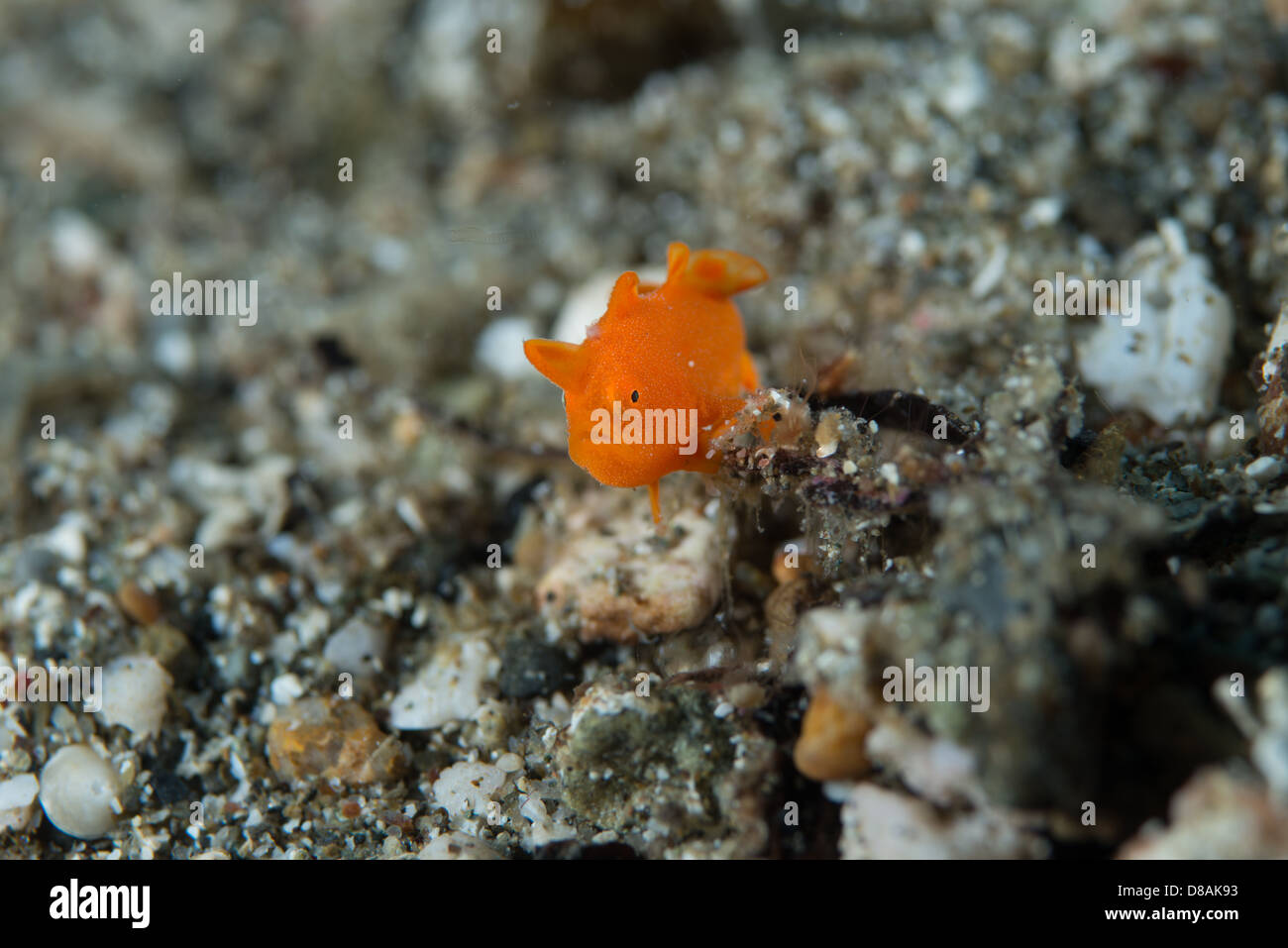The smallest tiny orange painted frogfish (antennarius pictus) just a little bigger than a grain of sand.

Image details
Contributor:
Underwater / Alamy Stock PhotoImage ID:
D8AK93File size:
103.4 MB (2.4 MB Compressed download)Releases:
Model - no | Property - noDo I need a release?Dimensions:
7360 x 4912 px | 62.3 x 41.6 cm | 24.5 x 16.4 inches | 300dpiDate taken:
9 May 2013Location:
Ambon, Maluku, IndonesiaMore information:
Frogfish have a stocky appearance, atypical of fish. Ranging from 2.5–38 cm (1-15 inches) long, their plump, high-backed, non-streamlined body is scaleless and bare, often covered with bumpy, bifurcated spinules. Their short bodies have between 18 and 23 vertebrae and their mouths are upward pointed with palatal teeth. They are often brightly colored, white, yellow, red, green, or black or spotted in several colors in order to blend in with their coral surroundings. Coloration can also vary within one species, making it difficult to differentiate between them. Rather than typical dorsal fins, the front-most of the three fins is called the illicium or "rod" and is topped with the esca or "lure". The illicium often has striped markings, while the esca takes a different form in each species. Because of the variety of colors even within a single species, the esca and illicium is a useful tool to differentiate among different varieties. Some of them resemble fish, some shrimp, some polychaetes, some tubeworms, and some simply a formless lump; one genus, Echinophryne has no esca at all. Despite very specific mimicry in the esca, examinations of stomach contents do not reveal any specialized predation patterns, for example, only worm-eating fish consumed by frogfish with worm-mimicking esca. If lost, the esca can be regenerated. In many species the illicium and esca can be withdrawn into a depression between the second and third dorsal fins for protection when they are not needed. Frogfish have small, round gill openings behind their pectoral fins. With the exception of Butler's frogfish and the Rough Anglerfish, frogfish use a gas bladder to control their buoyancy.